News
CA120: The early vote and the roller coaster of Election Day
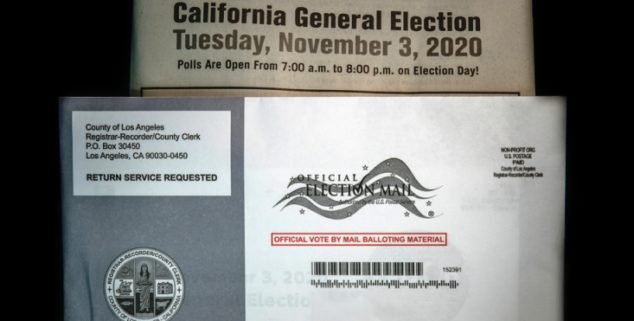 An image of California voting materials. (Photo: Jason Raff, via Shutterstock)
An image of California voting materials. (Photo: Jason Raff, via Shutterstock)As has been reported in Capitol Weekly, the early vote has been dominated by Democratic voters. This is in direct contrast to every other election in California history in which Republicans have over-performed in the early returns, leaving Democrats to play catch-up in the late mail and Election Day vote.
As the following chart shows, year by year Republicans have had turnout levels that are well above their rate of registration. But this year, Democrats are above their registration at 52% of the early vote and Republicans are below their registration line at 23% of the returns.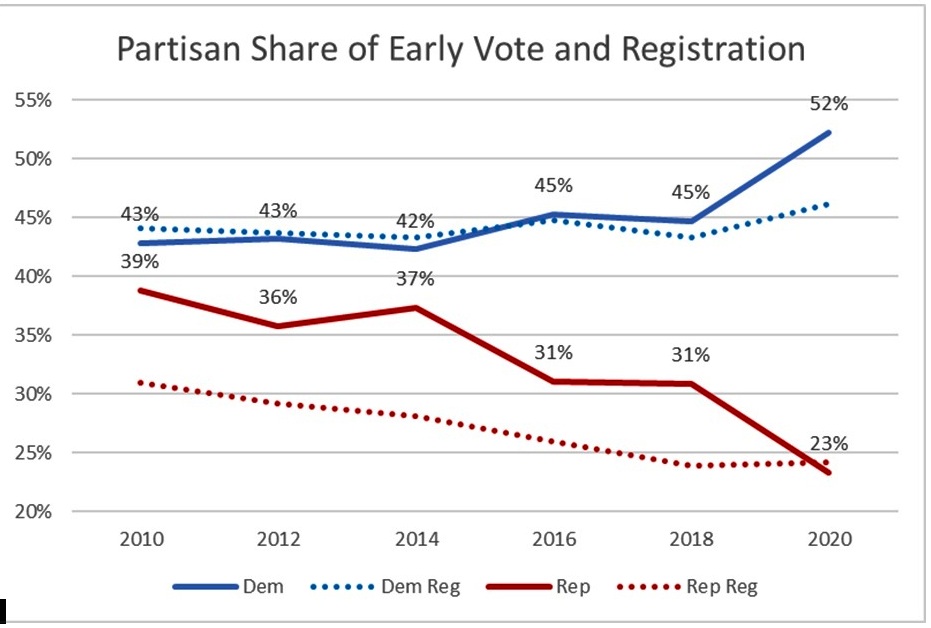
Looking at this data another way, the following shows the partisan over/under performance from each of the past five statewide elections. On average, Republicans have over performed their rate of registration in the early vote by 7 points while Democrats have held steady, always within 1 point of their share of registration.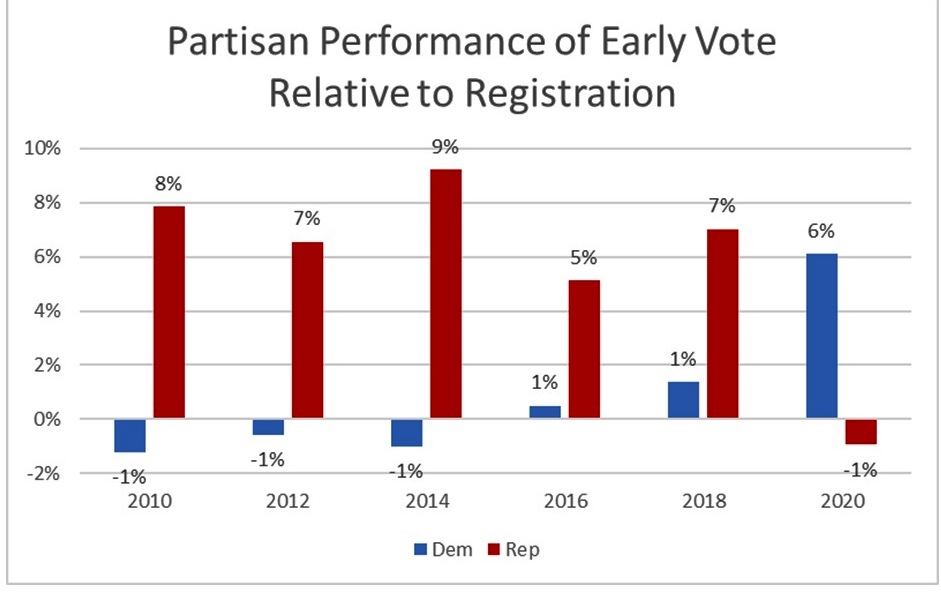
This year the script has been flipped, primarily by President Trump, whose megaphone is so powerful that it transformed in-person voting into a part of the Republican brand, and drove Democrats to vote earlier than ever before.
This is not good for the GOP. But under these numbers, the Capitol Weekly polling shows something that could be even worse.
Our tracking poll of over 50,000 Californians who returned their ballots in the first four weeks of voting finds the electorate isn’t just skewed because of out-sized Democratic turnout. It is even more left-leaning because the early-voting independents — often called “NPP” voters for registering with no party preference — are much more progressive. The independents who are turning out early are similar to the those who turned out in 2018 and flipped several congressional and legislative seats.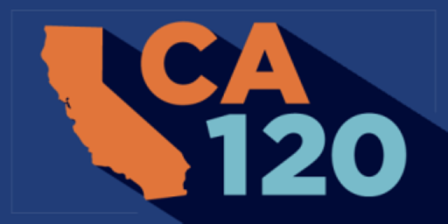
Among NPP respondents who have returned ballots, only 10% said they always or mostly support Republican candidates, 52% say they support Democrats, with the remainder saying they go back and forth. In the presidential contest, 80% of this group say they are supporting former Vice President Joe Biden and only 12% are supporting President Donald Trump.
Among partisan voters, Democrats are more strongly supportive of their candidates and presidential ticket than Republicans. Where 82% of Democrats say they mostly or always support Democrats, this drops to 73% for the early voting Republicans. Where only 3% of Democrats say they supported President Trump, 15% of these early-voting Republicans were for Biden.
But this early vote isn’t the entire election. In-person voting has begun to turn the tide.
In the latest returns, Democrats are under-performing their rate of registration and Republicans are performing several points above. The Democratic advantage has been closing from 40-points in early October to just 8-points for the last weekend.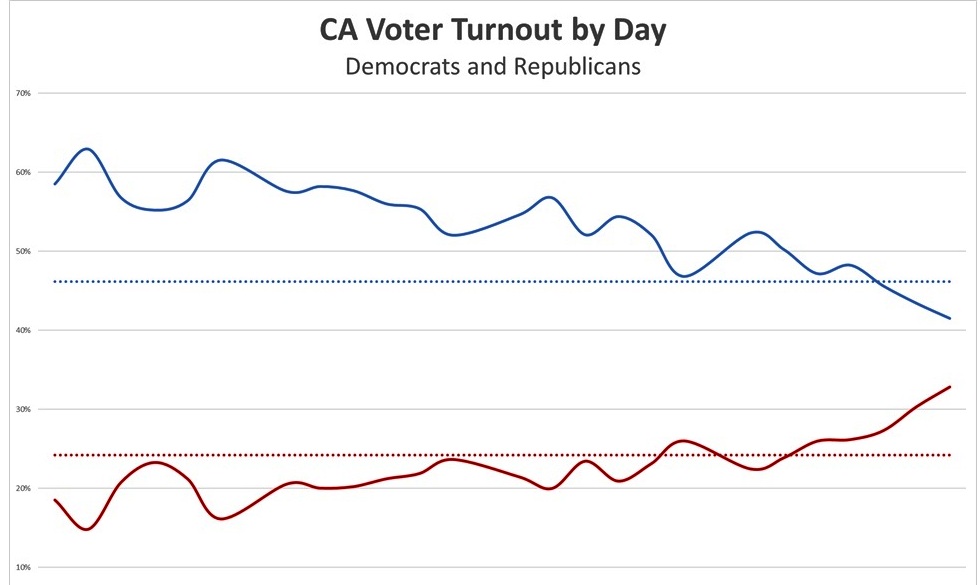
Looking at the last three days in Los Angeles and Orange counties we see a doubling of the Republican share of the electorate when broken out by by-mail and drop-box versus in-person voting. This could suggest a trend that would bring Republicans hopefully looking forward to Election Day.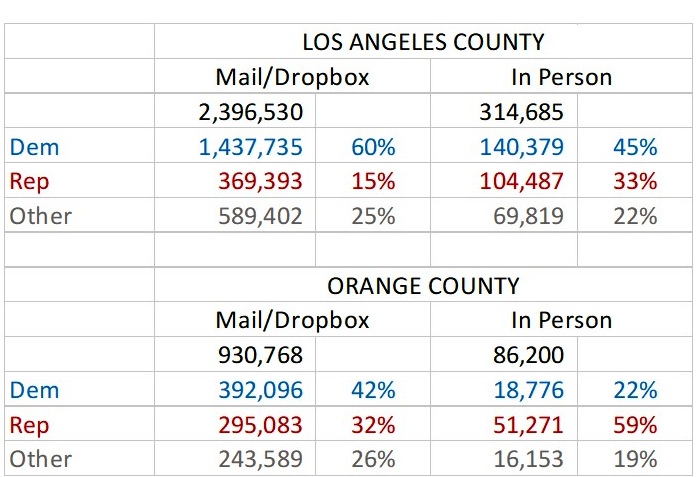
But is it enough?
Seeing figures like 300,000 in-person votes in L.A. county over the first week sounds impressive. But in a county with 5.7 million voters, that is less than 5% of the electorate. There is still a massive population of more than a million voters in L.A. County alone that are considered likely to vote on Election Day.
Even if we have 12.5 million ballots cast statewide by Monday night, we would still have an expected 4-to-5 million likely voters with outstanding ballots that need to get in the mail or a drop box, or be cast in-person.
In a normal election, a groundswell of Election Day voters would be manageable.
But this year voters need to deal with the reduced number of polling locations, they will be confronted with on-site restrictions, such as mask wearing, fewer actual voting machines in each location and other protective measures could transform the in-person experience.
With six-foot distancing in lines, we could see what used to be a quick trip to the polling place look like an hour-long line around the block.
With these very polarized early and late voting patterns, we should expect Election Night to be one big roller-coaster ride.
Oddly, because of the partisan shift to in-person voting by Republicans, the most impacted voting locations could be in Republican strongholds that have probably never seen a line at a polling location.
In the primary, there were jammed voting centers in areas with high minority populations and lots of young people, including locations around college campuses. Counties are likely prepared in these areas, but are they also doubling their staff and voting locations in the Republican suburbs?
With many Republicans self-selecting to vote in-person, party leaders are concerned about how their voters will react to long lines in their neighborhoods and how many might be discouraged from voting when they hear about election day problems and hour-long waits.
It is very possible that this move by President Trump to discredit vote-by-mail, along with pushing Republicans to vote in person, will lead to outcomes on Election Day that will reverberate up and down the ballot.
The second wave of ballots we see, likely beginning around 9 p.m, and going past midnight, will be the in-person votes.
With these very polarized early and late voting patterns, we should expect Election Night to be one big roller-coaster ride.
The weight of this early vote disparity is going to become immediately apparent when the initial ballot returns start being released by counties.
The first vote reported will come as soon as the polls close at 8 p.m. These so-called “801s” will be just the early votes that have been tabulated by counties in the weeks leading up to Election Day through by-mail and drop box locations, and some early in-person voting.
Observers will recall prior elections when the county and state websites would say “0% reporting” but there are millions of votes tabulated. That wasn’t an error – it was showing that the early votes were coming from those mailed-in ballots, and the precinct in-person votes tied to specific precincts hadn’t begun to be tabulated or reported.
The second wave of ballots we see, likely beginning around 9 p.m, and going past midnight, will be the in-person votes – those ballots cast by voters who wanted to use a machine to vote, rather than the absentee ballot that was mailed to them.
What will these in-person votes look like?
Well, we can look to three data points: the polling showing that 44% of Republicans said they wanted to vote in person on Election Day, the early doubling of Republican turnout in Orange County and Los Angeles, and the sheer lack of likely voters among the Democratic voters who still have yet to vote.
This all might sound like an election night nightmare for California politicos. But it is going to be worse in other states…
As a result, observers should prepare for a bit of whiplash when these in-person votes come in. A progressive ballot measure that was up by 5-points might instantly be down by 10. A Republican congressional member who was shockingly behind earlier in the evening might surge ahead.
As pollster Jonathan Brown told me, Election Day will be like the famous Seinfield episode where George Costanza did the opposite of everything.
If the early vote is the Democratic high-water mark, and the poll vote flips everything more Republican, what will the days and weeks after the election bring?
There are a couple schools of thought about this.
One is that we will continue to see the blue shift, with votes from provisional ballots and same-day registrations, late-mailed ballots and things like the curing of ballots with missing or unmatched signatures favoring Democrats.
But it is also possible that a lot of Republican votes will be mixed in there due to some counties requiring voters who don’t bring their mail-in ballot vote with a provisional.
So the long tail of the election cycle, that seemingly endless drag as we get to the final result, could bring back a couple Democratic contests, or it might be a flat tail, with little impact on partisan outcomes.
This all might sound like an election night nightmare for California politicos. But it is going to be worse in other states – particularly the key swing states of Pennsylvania, Michigan and Wisconsin which, unlike California, have laws prohibiting the early vote counting.
According to FiveThirtyEight, there is a 50% chance that the presidential contest will be decided in one of these three states, but in each of these, the poll vote will be counted first. That heavily Republican in-person voting will likely swing those states strongly in President Trump’s favor Tuesday night, and it might be days or weeks until we see the full impact of the more Democratic early mail-in and dropbox votes.
This election night could be like a hall of mirrors – Democratic gains seemingly larger than they really are in California and other states reporting lopsided early numbers, and Republican votes out-sized in other states with different vote counting practices.
And none of this is process going to feel good for partisans on either side of the aisle as we all try to determine what is real, and what is not, in what is assuredly the strangest election of our lifetimes.
—
Editor’s Note: Corrects spelling of George Costanza, 30th graf. Paul Mitchell, a data expert and a regular contributor to Capitol Weekly, is the creator of the CA120 column, vice president of Political Data, Inc., and owner of Redistricting Partners, a political consulting firm.
Want to see more stories like this? Sign up for The Roundup, the free daily newsletter about California politics from the editors of Capitol Weekly. Stay up to date on the news you need to know.
Sign up below, then look for a confirmation email in your inbox.

Leave a Reply